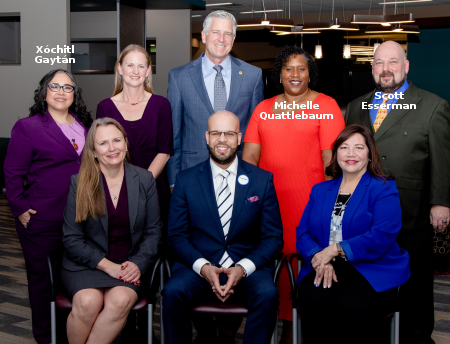Amazon commits almost $20 million more to expanding its satellite production facility
Amazon yesterday revealed it is going to spend an addition $19.5 million to expand its satellite production facility at the Kennedy Space Center in Florida in order to overcome the long multi-year delay in getting production started.
The company said Aug. 22 the investment will support a secondary, 3,900-square-meter support facility at the site, which would help accelerate launch cadence amid a looming regulatory deadline to deploy half the constellation by July 2026. The building would join a 9,300-square-meter satellite processing facility Amazon announced last year at Kennedy’s runway-equipped Launch and Landing Facility, bringing total investment in the site to nearly $140 million.
The company hopes to open this additional facility by next year. It will need it, because its FCC license for its Kuiper internet constellation — conceived to be similar to SpaceX’s Starlink — requires it to launch half of the constellation of 3,200+ satellites by 2026 and have the entire constellation in orbit by 2029. Meeting that first deadline will be challenging at this point, though the company hopes to be launching frequently in the next few years. It has contracts to launch satellites 46 times on ULA rockets (8 on Atlas-5 and 36 on Vulcan), 27 times on Blue Origin’s New Glenn, 18 times on ArianeGroup’s Ariane-6, and 3 times on SpaceX’s Falcon-9. To provide payloads for those launches however it will need to be able to quickly build a lot of satellites, and that’s what this additional investment is for.
It must be noted again that the Kuiper constellation was first proposed by Amazon at almost the exact same time as Elon Musk proposed his Starlink constellation. SpaceX now has several thousand satellites in orbit and is earning several billion dollars per year from several million signed up customers. Amazon in comparison has only launched two test satellites and zero operational satellites in that same time frame.
Amazon yesterday revealed it is going to spend an addition $19.5 million to expand its satellite production facility at the Kennedy Space Center in Florida in order to overcome the long multi-year delay in getting production started.
The company said Aug. 22 the investment will support a secondary, 3,900-square-meter support facility at the site, which would help accelerate launch cadence amid a looming regulatory deadline to deploy half the constellation by July 2026. The building would join a 9,300-square-meter satellite processing facility Amazon announced last year at Kennedy’s runway-equipped Launch and Landing Facility, bringing total investment in the site to nearly $140 million.
The company hopes to open this additional facility by next year. It will need it, because its FCC license for its Kuiper internet constellation — conceived to be similar to SpaceX’s Starlink — requires it to launch half of the constellation of 3,200+ satellites by 2026 and have the entire constellation in orbit by 2029. Meeting that first deadline will be challenging at this point, though the company hopes to be launching frequently in the next few years. It has contracts to launch satellites 46 times on ULA rockets (8 on Atlas-5 and 36 on Vulcan), 27 times on Blue Origin’s New Glenn, 18 times on ArianeGroup’s Ariane-6, and 3 times on SpaceX’s Falcon-9. To provide payloads for those launches however it will need to be able to quickly build a lot of satellites, and that’s what this additional investment is for.
It must be noted again that the Kuiper constellation was first proposed by Amazon at almost the exact same time as Elon Musk proposed his Starlink constellation. SpaceX now has several thousand satellites in orbit and is earning several billion dollars per year from several million signed up customers. Amazon in comparison has only launched two test satellites and zero operational satellites in that same time frame.
















